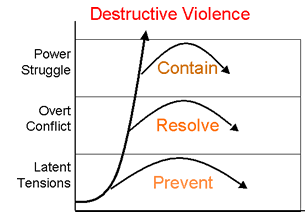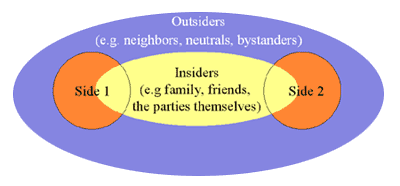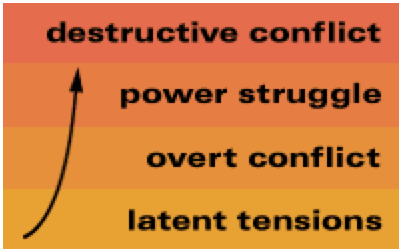85 results for author: Christian
February 08, 2004
By Barry Davis
The Middle Way – Mahatma Gandhi and Martin Luther King would, no doubt, have approved.
While politicians on both sides of the seemingly interminable bloody Middle East conflict remained entrenched, a small but growing group of Israeli Jews and Arabs have decided to take matters into their own hands. Actually, "into their own feet" would be a more accurate description of their peaceful protest.
Over the past couple of years hundreds of Jewish and Arab Israelis have taken part in silent peace walks in various regions of the country. One trek last year saw several hundred walkers traverse the Galilee region in ...
Why Once-Violent Neighborhoods Stayed Calm During the Blackout
August 24, 2003
By BRENT STAPLES
New Yorkers who lived through the arson and looting that ravaged the city during the blackout of 1977 were understandably edgy when the lights went out on Aug. 14. But it was clear by late evening that the blackout of 2003 would be nothing like its predecessor. This night did not belong to arsonists or looters; it belonged to families and neighbors who poured into the streets to use the headlights of parked cars for block parties and barbecues.
Why were things so quiet? For one thing, the World Trade Center tragedy taught New Yorkers to recognize ...
Muhammad Yunus may not think of himself as engaged in conflict prevention, but he is a champion Provider. In 1976, as a young economics professor in the famine-stricken nation of Bangladesh, he met a village woman making a bamboo chair. He asked her how much profit she earned and was astonished to learn that it was only two pennies a day. "Why?" he asked. She explained that she had no bamboo of her own and had to buy it from a trader, who required in return that she sell him the finished chair at the low price he set. Yunus asked how much she needed to be able to buy her own bamboo. "Thirty cents," she said. He loaned her the money and, several weeks ...
Boston, MA
"I've got to check in on America's worst nightmare,' announced the Reverend Eugene Rivers. "Ten-year-old kid. His daddy was shot through the head. His mama's got 'chemical' issues. He's a ringleader. You can just see it. He's been getting into trouble - they already caught him with a knife. He'll be packing a Glock [a gun] before long, unless someone gets to him."
"Hey, money," Rivers told the boy in a meeting arranged in the school library. "You know what I'm doing here? I'm gonna keep you outta jail." The boy stared at him without expression. "What do you like to do?" Rivers asked. "You like movies?" Kareem nodded. "What do you want ...
In World War II, the U.S. Army was astonished to learn that at least three out of every four riflemen, trained to kill and commanded to do so, could not bring themselves to pull the trigger when they could actually see the person they were about to shoot. Amazingly, this held true even when the individual rifleman himself was in danger of being shot. The riflemen refrained from shooting as long as they thought they were not being observed by their commanding officer.
Psychiatrists found that the chief cause of combat fatigue was not fear of being killed, but fear of killing. Colonel S. L. A. Marshall, who interviewed the infantrymen, concluded:
...
In the midst of a firefight in the rice paddies between American soldiers and the Viet Cong early in the Vietnam War, six monks walked toward the line of fire.
"They didn't look right, they didn't look left. They walked straight through," remembers David Busch, one of the American soldiers.
"It was really strange, because nobody shot at 'em. And after they walked over the berm, suddenly all the fight was out of me. It just didn't feel like I wanted to do this anymore, at least not that day. It must have been that way for everybody, because everybody quit. We just stopped fighting."
In the heart of Nazi-dominated Europe, when millions of Jews were being torn from their communities and dispatched to the death camps, one community of three thousand farmers took it upon themselves to offer sanctuary to Jewish refugees until they could be spirited to safety. For four years, the villagers of Le Chambon risked their lives defending innocent people against the Nazis and their hirelings. The number of refugees protected was not small. Twenty-five hundred Jews, mostly children, were estimated to have been rescued.
Le Chambon's efforts did not escape the notice of the authorities. The village was not far from the French capital of ...
NOT IN OUR TOWN is a movement inspired by the residents of Billings, Montana who responded to an upsurge in hate violence by standing together for a hate-free community. In 1993, hate activities in Billings reached a crescendo. KKK fliers were distributed, the Jewish cemetery was desecrated, the home of a Native American family was painted with swastikas, and a brick was thrown through the window of a six-year-old boy who displayed a Menorah for Hanukkah.
Rather than resigning itself to the growing climate of hate, the community took a stand. The police chief urged citizens to respond before the violence escalated any further. Religious groups from ...
Eleven-year-old James had bullied his classmate Mark for a long time, ragging him over his poor English and foreign origins.
In chemistry class one day, James spilled a test-tube full of water on Mark's head; Mark retaliated with a test-tube full of water mixed with chemicals. The dispute threatened to escalate.
When conflict breaks out, the ten roles work in reverse sequence, beginning with containment and looping back to resolution and prevention. In this case, the teacher, acting first as Witness and then as Peacekeeper, intervened to stop the fight. He emphasized to the whole class the potential dangers and, serving as Referee, forbade them ...
Lately, I have come to believe that we in the field have been thinking way too small. We've been thinking that it was enough to resolve disputes, particularly if it is done in whatever is our way of doing that. I am now coming to see mediation as part of a broad spectrum of collaborative processes. It is now easier to appreciate that just mediating and thinking of ourselves as mediators may be limiting of the opportunities and realizations of those with whom we work. And it may also be limiting of our career opportunities. Perhaps with a slight shift in orientation, we can think and speak more comprehensively about what we are doing. This will, in ...




